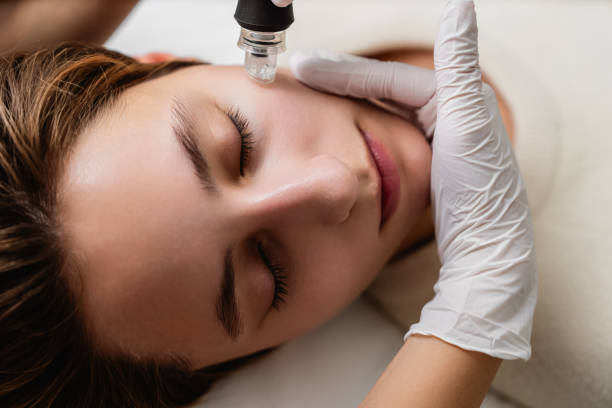Living with rough, itchy, and thickened patches on your skin can feel frustrating and uncomfortable. If your doctor has mentioned hypertrophic lichen planus, you might be wondering what it means, how serious it is, and what you can do to manage it. Understanding Hypertrophic Lichen Planus: A Complete Patient Guide will help you make sense of what’s happening to your skin, how doctors treat it, and how you can care for yourself day to day. By the end, you’ll have clear and practical information to support your treatment plan.
What Is Hypertrophic Lichen Planus?
Hypertrophic lichen planus (HLP) is a chronic inflammatory skin condition that causes thick, raised, and intensely itchy plaques, often on the shins, ankles, or other parts of the legs. These plaques may appear violet, reddish, or brownish, with a rough, scaly surface.
Unlike the flatter spots seen in other forms of lichen planus, hypertrophic lesions are thicker and more persistent. They often leave behind darker patches, known as post-inflammatory hyperpigmentation, even after healing.
Although HLP is not contagious, it can be stubborn and may come and go over several months or years.
Causes and Risk Factors
The exact cause of hypertrophic lichen planus is not fully understood, but it’s believed to involve an overactive immune response. Your immune system mistakenly attacks the skin’s surface cells, causing inflammation and thickening.
Some factors that may play a role include:
- Autoimmune activity – Your immune system targets healthy skin cells.
- Genetic susceptibility – A family history of lichen planus or autoimmune disease may increase risk.
- Medications – Certain drugs, including antimalarials, beta-blockers, and non-steroidal anti-inflammatory medicines, can trigger a similar rash.
- Infections – Hepatitis C infection has been linked to lichen planus in some people.
- Stress and trauma – Emotional stress or repeated scratching can worsen symptoms (known as the Koebner phenomenon).
While these triggers may influence flare-ups, the condition can develop even without an obvious cause.
Symptoms and How It Looks
Hypertrophic lichen planus often develops slowly and may last longer than other forms. Common signs and sensations include:
- Thick, raised, scaly plaques, particularly on the lower legs
- Severe itching, often worse at night
- Small bumps or nodules merging into larger patches
- Skin discolouration (purple-red, dark brown, or grey)
- Pain or tenderness if lesions become cracked or infected
Scratching makes the skin thicker and itchier, creating a cycle that can be hard to break. Over time, scarring and long-lasting pigmentation changes may occur.
Diagnosis and Medical Evaluation
Your dermatologist diagnoses hypertrophic lichen planus through a combination of:
- Physical examination – Typical thickened, itchy plaques often give clear clues.
- Skin biopsy – A small tissue sample is taken to confirm the diagnosis and rule out other causes, such as psoriasis or chronic eczema.
- Blood tests – To check for hepatitis C or autoimmune markers if indicated.
In rare cases, your doctor might recommend checking a persistent lesion to exclude skin cancer (squamous cell carcinoma), as chronic inflammation can slightly raise this risk.
Treatment Options
Managing hypertrophic lichen planus aims to control inflammation, relieve itching, and prevent new lesions. Treatment depends on the severity and how your skin responds.
1. Prescription Topical Medicines
- Potent corticosteroid creams or ointments help calm inflammation and flatten thick plaques.
- Topical calcineurin inhibitors such as tacrolimus or pimecrolimus may be used, especially for sensitive areas.
- Occlusive dressings (covering medicated areas with cling film or hydrocolloid patches) enhance absorption and speed healing.
2. Oral Treatments
For widespread or resistant cases, doctors may prescribe:
- Oral corticosteroids for short periods during severe flare-ups.
- Retinoids (acitretin) to regulate skin cell turnover.
- Immunosuppressants like cyclosporine, methotrexate, or mycophenolate mofetil when other options fail.
3. Light Therapy
Controlled narrowband UVB or PUVA therapy can improve inflammation and reduce itching. Treatment requires careful supervision to avoid side effects.
4. Itch Relief and Skin Care
- Antihistamines can help calm itching.
- Fragrance-free moisturisers maintain hydration and reduce irritation.
- Avoid scratching, as this worsens inflammation and leads to thicker plaques.
While these treatments reduce symptoms, some patients prefer exploring additional or gentler options alongside medical care.
Lichen Planus Alternative Treatment
Some people explore Lichen Planus Alternative Treatment methods to complement medical therapy. These may include herbal formulations, phototherapy alternatives, stress-management techniques, and diet adjustments.
For example:
- Aloe vera gel and turmeric-based creams are used to soothe inflammation naturally.
- Omega-3 fatty acids (from flaxseed or fish oil) may have mild anti-inflammatory effects.
- Mind-body approaches like yoga, meditation, and cognitive-behavioural therapy can help reduce stress, which often worsens symptoms.
If you choose to try alternative treatments, always inform your dermatologist to ensure they don’t interfere with prescribed medicines or delay proper care.
Natural Remedies for Lichen Planus
Some home-based and Natural Remedies for Lichen Planus can ease discomfort and support skin healing. These are not replacements for medical treatment but may provide extra comfort between doctor visits.
1. Soothing Baths
Adding colloidal oatmeal or Epsom salt to lukewarm bathwater can calm itching and soften rough skin.
2. Gentle Skin Care Routine
Use mild, fragrance-free cleansers, avoid hot showers, and apply thick moisturisers immediately after bathing to seal in moisture.
3. Anti-Inflammatory Foods
Eating more fruit, vegetables, oily fish, and whole grains may help your immune system function better and reduce flare-ups. Avoiding processed foods, refined sugar, and excessive alcohol may also help.
4. Cold Compresses
Applying a cool, damp cloth to itchy plaques reduces inflammation and gives temporary relief.
Consistency makes a difference — small daily habits often reduce irritation over time.
Role of All Natural Organic Supplements
Some people turn to All Natural Organic Supplements to support overall skin health. Supplements such as vitamin D, zinc, curcumin, probiotics, and omega-3 fatty acids may promote a healthier immune balance and reduce inflammation.
Before starting any supplement, discuss it with your doctor or pharmacist to ensure it’s safe alongside your current medication. Evidence for supplements in hypertrophic lichen planus is still developing, so use them as supportive tools, not substitutes for prescribed therapy.
Coping and Daily Care Tips
Living with hypertrophic lichen planus involves more than treating the skin — it’s about caring for your comfort, confidence, and emotional wellbeing.
Practical steps include:
- Keep your nails short to avoid skin damage from scratching.
- Apply prescribed ointments exactly as directed.
- Choose loose, breathable clothing to reduce friction.
- Protect legs from trauma or insect bites, as new lesions can appear in injured skin.
- Manage stress through relaxation, breathing exercises, or light exercise.
- Record flare-ups and triggers in a diary to discuss with your dermatologist.
Support from friends, family, or patient communities can make coping easier, especially during long-lasting flare-ups.
When to See a Specialist
You should contact a dermatologist if:
- The rash spreads or worsens despite treatment.
- Lesions become painful, ulcerated, or infected.
- New lesions develop on the genitals or in the mouth.
- You notice bleeding, crusting, or non-healing areas.
Regular follow-ups help monitor your progress and adjust treatment safely.
Outlook and Support Resources
Hypertrophic lichen planus can be persistent, but most people achieve good control with proper treatment and care. Although it may recur, the intensity and duration of flare-ups often lessen over time.
If you find the emotional effects challenging, consider speaking with a counsellor or joining a support group for skin conditions. Sharing experiences can help you feel less isolated and more confident about managing your symptoms.
Conclusion
Living with hypertrophic lichen planus can test your patience, but effective management is possible through the right combination of medical care, self-care, and healthy routines. As discussed in Understanding Hypertrophic Lichen Planus: A Complete Patient Guide, staying informed empowers you to take control of your condition. Continue learning, stay consistent with your treatments, and maintain open communication with your healthcare provider.







0 Comments